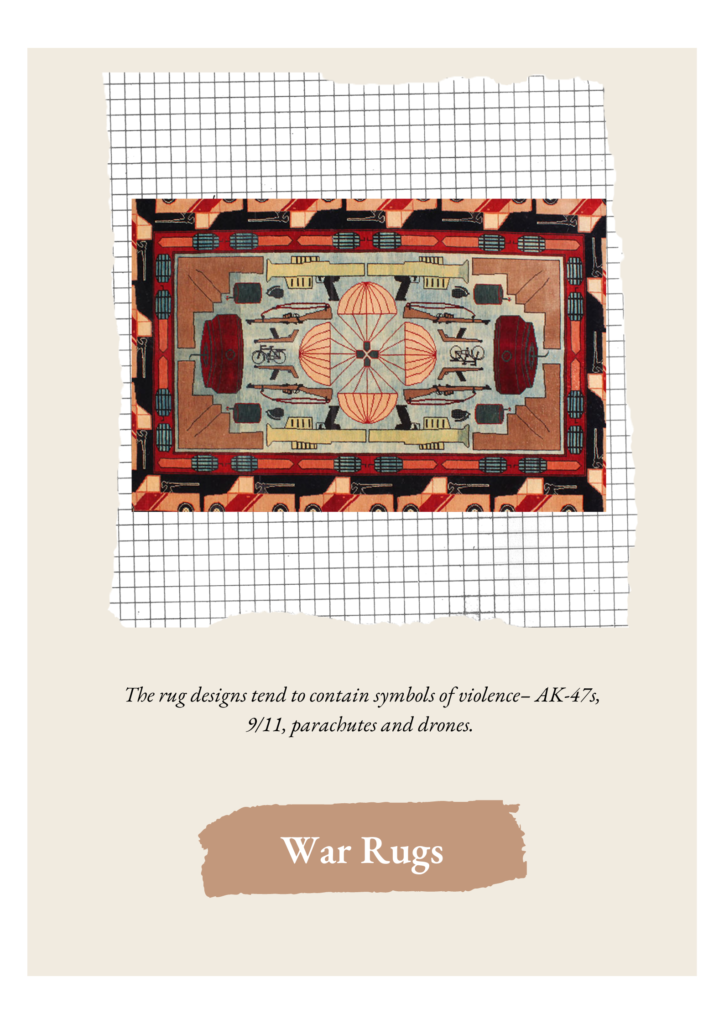
Afghan women have been one of the most proficient weavers of hand-made rugs of intricate design for thousands of years. It was in 1979, soon after the Soviet invasion of Afghanistan that the usuals floral motifs were replaced with images of ammunition and war scenes. Iconography in propaganda leaflets that were dropped from U.S. military aircrafts began to appear in the women’s carpets, including the image of the burning Twin Towers. It was initially women from Afghanistan’s Baluchi culture who began the process of incorporating what they encountered in their daily lives into the rugs that previously featured floral and ordinary symbols.
The content of the carpets can very well be said to give an insight into the state of mind of Afghan women. The armed conflict steeped so deeply into their daily life that women in Afghanistan and those living as refugees in Pakistan and Iran began to incorporate icons of war into their carpets. According to Hanifa Tokhi, an Afghan immigrant who fled Kabul after the Soviet invasion, believes that the earliest war rugs were a form of rebellion[i]. They were a medium through which women could comment on the violent reality that the Soviet invasion , a way through which Afghan women could stage a protest and make their voices heard. The ancient pattern techniques of carpet weaving are still passed from mother to daughter. The weavers’ authorship is often lost when these works go to market, yet their masterful compositions reveal a dark humor and complex commentary on contemporary life.
Sources
- https://afghanistanonmymind.blogspot.com/2013/04/rada-akbar-afghan-photographer.html
- https://theconversation.com/afghanistans-war-rug-industry-distorts-the-reality-of-everyday-trauma-167608
- https://www.artsy.net/article/artsy-editorial-lessons-afghan-women-weave-modern-war-ancient-tradition
- https://www.smithsonianmag.com/arts-culture/rug-of-war-19377583/
[i] See Smithsonian Magazine article “Rug-of-War”, written by Mimi Kirk.

Pingback: Stories of Courage 2.0 – Log-in Gender